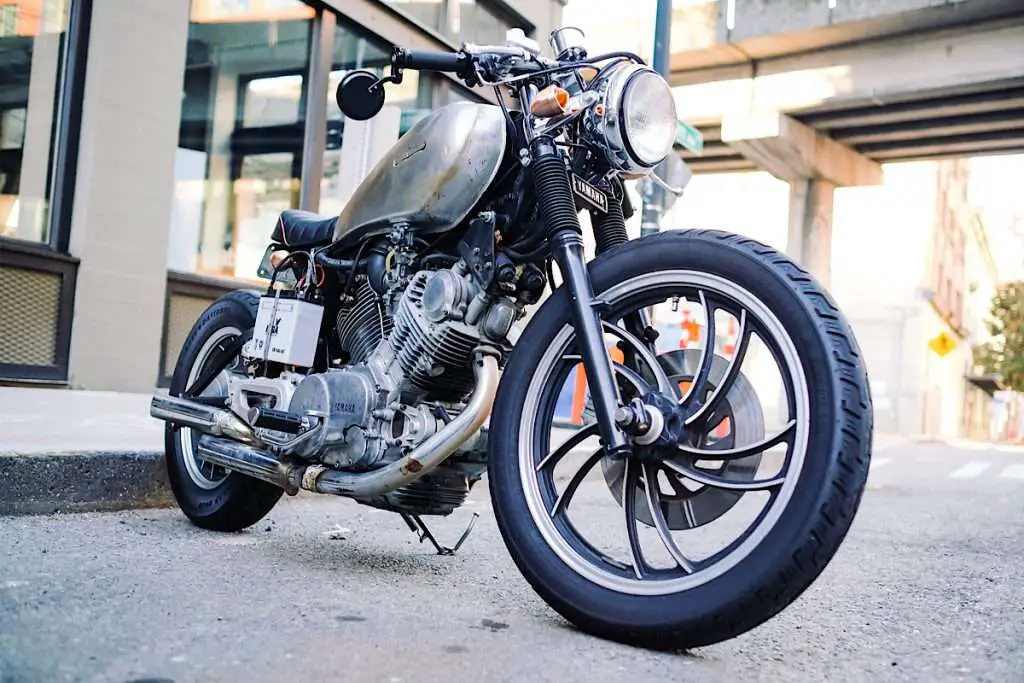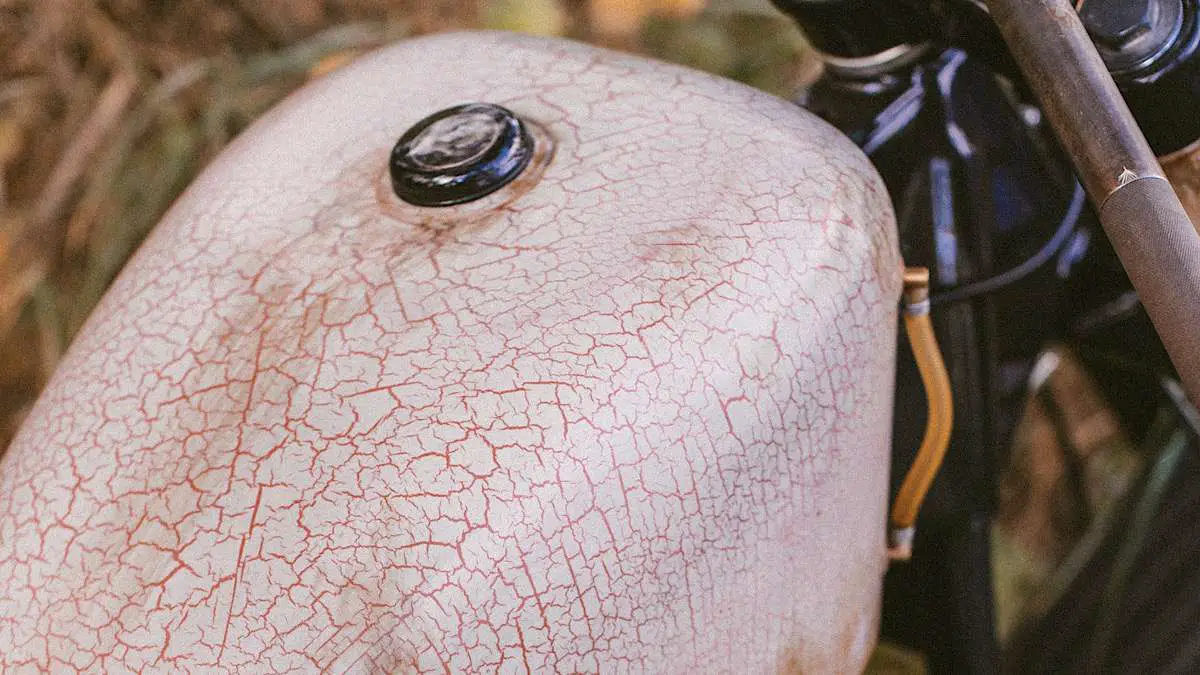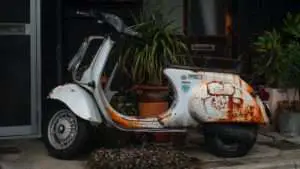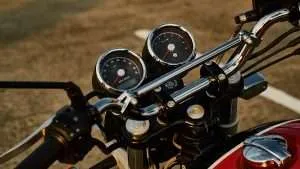Contents
Motorcycles have been around for years, so it is no surprise that many people are interested in restoring older models to see if they can be made roadworthy. However, that may involve significant repairs to the vehicle. With that in mind, you might want to know if you can sandblast a motorcycle gas tank.
You can sandblast a motorcycle gas tank, but there are a few important considerations, such as:
- Whether you plan to sandblast the inside or outside of the tank
- The age and damage to the tank
- Whether you plan to do it yourself or hire a professional
In this article, we’ll explore the ins and outs of the process of sandblasting your motorcycle gas tank, how to prepare the tank, when to hire a professional, and more, so read on.
Can You Sandblast a Motorcycle Gas Tank?

Imagine you purchase an old motorcycle that hasn’t seen the road for many, many years and you want to restore it. One of the first things you might do, for example, is to inspect the gas tank of the motorcycle. If there is a lot of rust and scale and other buildups it might be a candidate for sandblasting. But is that a viable option?
Yes, you can absolutely sandblast an old motorcycle gas tank so long as it is in good condition—with some considerations.
There are two possible paths ahead of you. You can sandblast the outside of the tank with little difficulty. You can also sandblast the inside of the tank. This, however, will be more difficult. Each such approach has its own problems and issues.
Sandblasting the Outside of a Motorcycle Gas Tank
This is the simpler of the two options as it involves simply blasting the corrosion and rust off the outside of the tank. The outside of the tank is easy to access, because, after all, it is right in front of you.
As it involves a sandblaster, it is not quite point and shoot, but it’s not rocket science, either. That being said, if you have never used a sandblaster before then it would probably be for the best that you hire a professional for the task (if only because a sandblasting setup isn’t cheap to buy for just one job).
An untrained user of a sandblaster could easily damage the tank—even chew holes through it—if he or she is not careful. You’ll find a short video demonstrating how someone can sandblast the outside of a tank here.
Sandblasting the Inside of a Motorcycle Gas Tank
Trying to sandblast the inside of a motorcycle’s gas tank is more difficult than sandblasting the outside because the inside of the tank is much more difficult to access. One approach would be to cut the tank open, sand blast the now accessible insides, and then close the tank back up again, using an appropriate method.
Alternatively, it might be possible to attach the sandblast hose to the tank, seal off the other openings, and try to clean out the insides that way, but that is not recommended.
The third and recommended approach does not involve a sandblaster at all. It is a process called Abatement, and it can even be done easily at home.
What is Abatement?
There are two different kinds of abatement. They are often used together in situations like this where you want to clean out a tank or similar item.
- Manual Abatement: This involves the use of abrasive materials like screws, bolts, small rocks, or what-have-you that can be placed inside the gas tank in a modest quantity. With the material inside, the tank can be shaken and the material will jostle about and physically strip away scale buildup.
- Chemical Abatement: This process is used prior to restoring the finish of the tank. It usually involves using some kind of mild acid. One such popular acid is white vinegar. White vinegar will eat into and remove rust on the surface of the inside of the gas tank. As an added bonus, it carries pretty much no potential for harm.
- Combined: The two different kinds of abatement are usually used together, i.e. make a slush of white vinegar and a couple handfuls of nuts and bolts. Pour the slush into the tank and vigorously shake the tank to swirl the mixture around. The vinegar will eat at the rust at the same time that the nuts and bolts will strip it away.
You should only use chemical processes like this in a well-ventilated area. If you are only using white vinegar, you probably don’t have too much to worry about here, but it doesn’t hurt to be extra-cautious. White vinegar does have a potent odor.
Similarly, you should also be cautious of chemical reactions. Test the combination of acid and the abrasive materials first. Again, if you are using white vinegar and screws, you are probably safe.
Is Sandblasting a Motorcycle Gas Tank Safe?

Recovery and repair aren’t the only reasons an individual might want to sandblast a motorcycle gas tank. You might just want to remove the paint currently on the tank so that you could repaint it in colors you prefer. Naturally, since a motorcycle gas tank holds gasoline, which can explode, you might be concerned if the sandblasting process is safe.
Before you attempt to sandblast a gas tank that has been in use recently:
- First, remove all the gas from the tank (this includes fumes which can ignite in the presence of a spark);
- Second, remove the tank from the bike.
Once you’ve done those two things, you shouldn’t have too much difficulty sandblasting the tank.
Another point of concern might be accidental damage to the tank from the sandblaster. If you are sandblasting an old tank, you make a mistake, or you simply lack an expert’s skill you might find that the tank is perforated from the sandblasting job.
If this happens, you will have to get the holes soldered. An easy way to check for holes involves simply using a flashlight to scan the tank. The light will penetrate even the smallest of holes and make them visible.
What Can I Use to Sandblast a Gas Tank?

A sand blaster uses compressed air to blow particles of material (called the media) out through a nozzle to strike a surface. It is usually used to clean a hard object (like a motorcycle tank) or even remove corrosion such as rust scale from said object.
The blasting media usually comes in three forms:
- Walnut Shells: Walnut shells are an excellent choice for cleaning purposes. They are soft enough that they neither damage nor change the underlying metal surface in anyway, which is good if you just want to clean a part.
- Glass Beads: Glass beads are a little sturdier. As a result, they pack a little bit stronger punch. They will actually harden the surface of a metal. And that has its own particular uses, too.
- Sand: Sand is the last option, and the most powerful. It cleans rust and corrosion off, and can even eat through the metal itself, if you are not too careful. It is also a little bit more difficult to clean off afterward. Use it well and wisely.
As mentioned previously, it is not quite as simple as point-and-shoot. It involves a practiced skill to effectively use, particularly when sand is involved. If you are inexperienced with sand blasting, we recommend you hire a professional.
Conclusion
So, if you are intent on sandblasting your motorcycle gas tank, it can be done—provided you use a little bit of caution and have some skill. Sandblasting is effective on the outside of a tank, provided you take a few precautions. For the inside of the tank, it might be better to go another route such as abatement.
Sources:
Sand Blasting a Gas Tank – What Media? – Technical – Antique Automobile Club of America – Discussion Forums (aaca.org)
Sandblasting inside of tank? | Adventure Rider (advrider.com)
Do you think sandblasting a motorcycle gas tank is safe? | Yahoo Answers
How To Clean A Motorcycle Gas Tank: Rust Removal & Repair (bikebandit.com)
Corvair gas tank sand blasting – Bing video
How to Paint a Motorcycle Tank: 6 Steps (with Pictures) – wikiHow
Dan’s Motorcycle “Sand Blasting” (dansmc.com)


 Rev’it Sand 3 Gloves Review
Rev’it Sand 3 Gloves Review  Do Motorcycle Covers Cause Rust?
Do Motorcycle Covers Cause Rust?  Can You Put a Fuel Gauge on a Motorcycle?
Can You Put a Fuel Gauge on a Motorcycle?  How to Wrap a Motorcycle Helmet in 15 Steps
How to Wrap a Motorcycle Helmet in 15 Steps